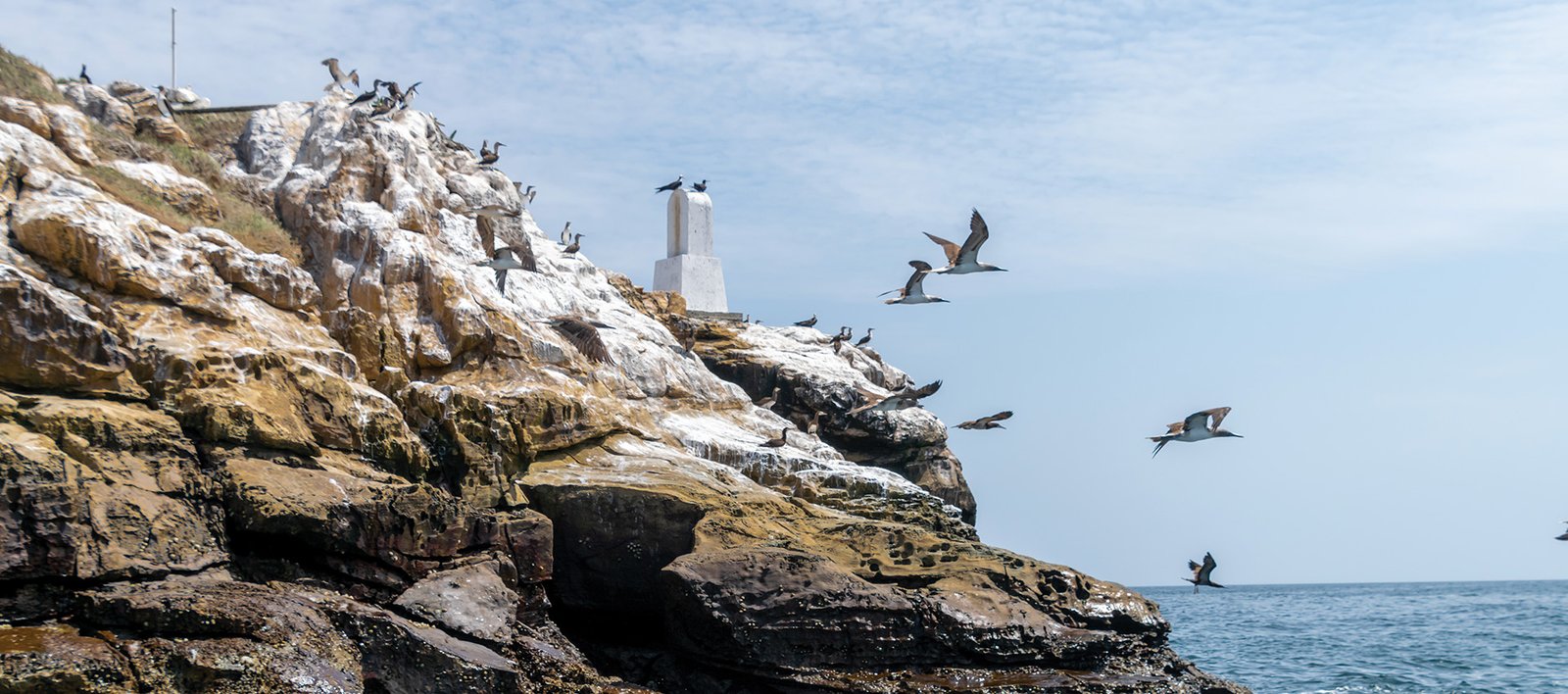
Pacheca Island, The City of Birds
Pacheca and Pachequilla, two rocky promontories rising from the limpid waters of the Panamanian Pacific, are home to approximately 10,000 seabirds of 10 different species.
By Margarita de los Ríos
Photos: Sira Pérez y Ruben Rodríguez
In Panama, a panguero is the person who helms a panga, or small open boat used by islanders for fishing or transportation. Our panguero, David Bravo, proudly shows us Pacheca from his panga. The rocky promontory rising from the limpid waters of the Panamanian Pacific in the Las Perlas archipelago measures slightly over half a square mile.
We’re ecstatic to observe the astounding abundance of birds that share the island in peaceful coexistence. According to scientists who have counted the nests from a light aircraft, there are 2,500 families of birds (approximately 10,000 birds total) on the island. The sun beats down, but is softened by the wind. The boat bobs to the rhythm of the waves.
We are accompanied by Rosabel Miró, executive director of the Panama Audubon Society, an organization dedicated to bird conservation, and Carlos Bethancourt, who represents Canopy Family, a chain of hotels designed especially for birding enthusiasts. Even these expert birdwatchers cannot believe what we’re seeing.
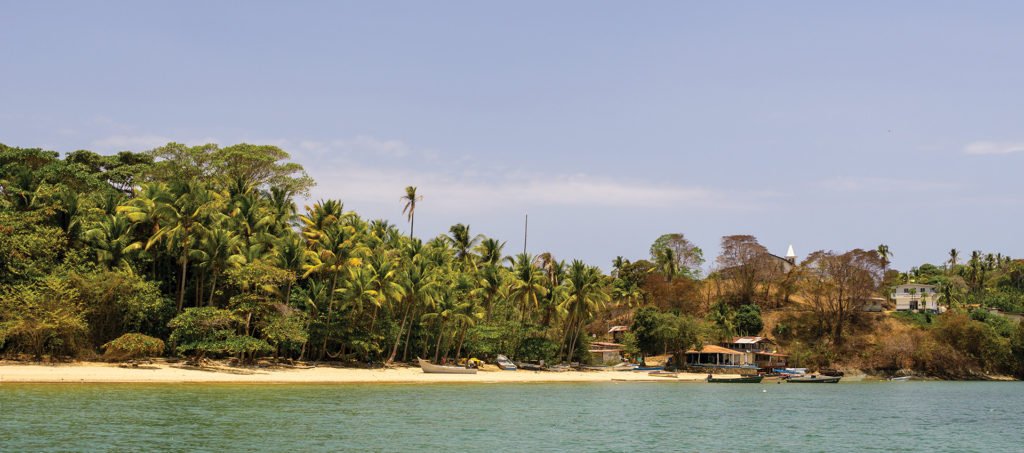
A family of around 45 pairs of blue-footed boobies have made their home on the edge of the rock. This charismatic bird has piqued the curiosity of birdwatchers since the age of Charles Darwin. They are one of the main attractions in the Galápagos Islands, drawing enthusiasts who come from around the world just for the pleasure of observing this bird.
The birds are famous for their blue feet and their unique courtship dance. Proud of the bright color of his feet, the male does a high-stepping dance, lifting his feet in turn and then rhythmically stomping as he emits a whistle, inviting the female to dance. If she accepts, she responds with her own whistle, and likewise shows off her feet as she improvises dance steps. Here in Pacheca, the birds can dance in peace without being harassed by droves of curious visitors as happens at better known sites.
We’re surprised to see that the blue-footed boobies are not alone. This is the nesting season (January to April), when eight species of seabirds come to nest on Pacheca and its sister island of Pachequilla, two bastions of ancient volcanoes that were very active more than three million years ago and are now carpeted with vegetation.
Among the usual residents are the brown boobies—as beautiful as their cousins, but much more common in the world’s oceans—the brown pelican, the magnificent frigatebird, the neotropic cormorant, and three species of herons: the bare-throated tiger heron, the great egret, and the yellow-crowned night heron.
The northwestern part of the island, thick with unspoiled native vegetation, hosts the largest concentration of cormorant nests; nesting begins in February and ends in June. Scientists report they have counted more than a thousand nests in one season. To the south, pelicans, frigatebirds, and great egrets zealously mark their narrow territories. Winter sees the arrival of two migratory species: the whimbrel and the spotted sandpiper. The islands begin to resemble a densely-populated city, a sort of raucous Shanghai on the wing, where different species are careful to remain in their own “neighborhoods.”
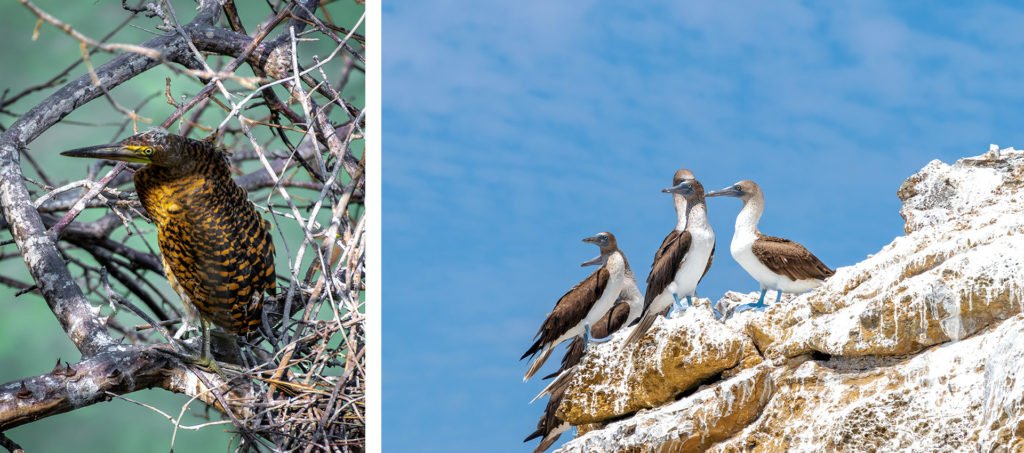
Birth of a Dream
A light plane brought us here this morning as special guests. The islanders want us to share the birth of a dream in which the pangueros of Saboga Island can augment their income by training to be knowledgeable guides and adding birding to their tourism offerings.
That’s why we are carrying several laminated guidebooks with large pictures and basic information about the ten bird species that a tourist might spot from a panga, along with backpacks to carry the guidebooks, so the pangueros can show tourists the various species.
Some ten pangueros await us on the beach at Saboga for a meeting set up by Marta Plaza, a tourism entrepreneur from the island. She tells us that, until a few months ago, a large part of the pangueros’ earnings was derived from transporting tourists who came by ferry from Panama City to the nearby, heavily-touristed island of Contadora. Pronounced tides prevented the ferry from putting into the island, so the pangueros would pick up the travelers at sea and bring them to shore. The recently-constructed tourist dock has done away with the need for the pangueros’ services, eliminating income that helped provide for a number of families among the island’s 400 residents.
Although they no longer have that guaranteed source of income, the pangueros continue to make a living from tourism by offering excursions around the archipelago. According to Rosabel Miró, learning to appreciate these birds and becoming a knowledgeable guide could add nearly two hours to the tourist tours and attract birding enthusiasts, who constitute a significant market in international tourism, from around the world. United Nations data reveals that observing birds and other wildlife generates around $32 billion dollars a year in the United States.
Pedro Santimateo is one of the pangueros most enthusiastic about the idea. He was born on Isla del Rey, a few miles south of Saboga. He worked in farming for twenty years, but some forty years ago, he heard rumors of development on Contadora Island. Incoming tourists needed transport to visit the farther reaches of the archipelago, prompting him to move to Saboga, just across the water from all the action. He started out working for a tourism company, but soon decided he would rather be independent. “There was a lot of activity,” he remembers.

Another panguero, Víctor Addiano, explains that travelers who come to Las Perlas are seeking solitary beaches where they can relax for the day, snorkel or scuba dive, and observe wildlife. “During the whalewatching season—between July and September—we’re really busy,” he tells us, “while May and June are very slow months.”
But nature was generous to the Las Perlas archipelago, and the islands are a veritable explosion of life. During the dry season—December to May—the seabirds nest, and sport fishing aficionados find an abundance of species thanks to the cold waters that surge upward from the bottom of the ocean during these months. This is followed by the arrival of a few solitary whales from Antarctica. Meanwhile, five species of turtles nest on 37 of the beaches. Activity ramps up in the second half of the year, when whales arrive from the south in search of warm tropical waters in which to mate and give birth to their calves. This is the origin of the dream: pangueros who understand the immense value of nature in the archipelago, and turn it into a tourism product.
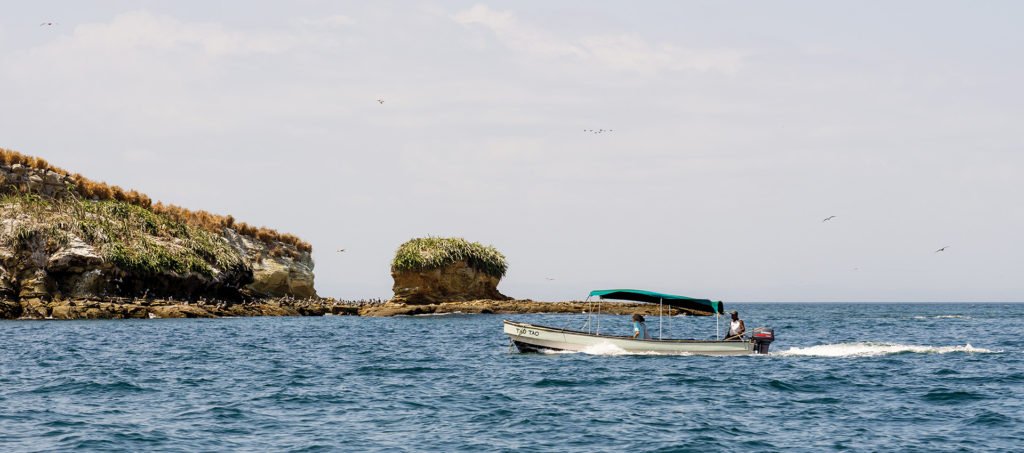
The first phase includes the creation and distribution of bird guidebooks. These were made with the support of Copa Airlines, Star5 and other companies: Canopy Family provided the information, the Audubon Society took care of the translation, and T’Shirts Interamerica donated the printing and laminating of the guidebooks, as well as the backpacks the pangueros will carry on their excursions. The materials will be handed out today, along with a talk about the importance of the seabirds.
Here, in sight of Pachequilla, Rosabel informs us that Panama is the “distribution center” for the brown pelican in the Pacific. They are born in Las Perlas, from where they disperse toward Central America. The simultaneous presence of courting pairs, nests, newborns, and juveniles is an invaluable treat for birders, who number some 42 million in the U.S. alone.
Since the beginning of the last century, scientists have been intrigued by the sheer abundance of birds on the island. The first known studies were carried out by Thayr and Bangs (1905), Rendhal (1920), Murphy (1936), and Wetmore (1946). They all agree on which species nest on Pacheca; we even know that this place has been a nursery since ancient times.
The vegetation that grows on these islands, their never-inhabited state, and the astonishing amount of food available in the Panamanian Pacific may explain why these birds have chosen this spot to nest and raise their chicks. Yet another mystery in the astounding biodiversity of Panama.

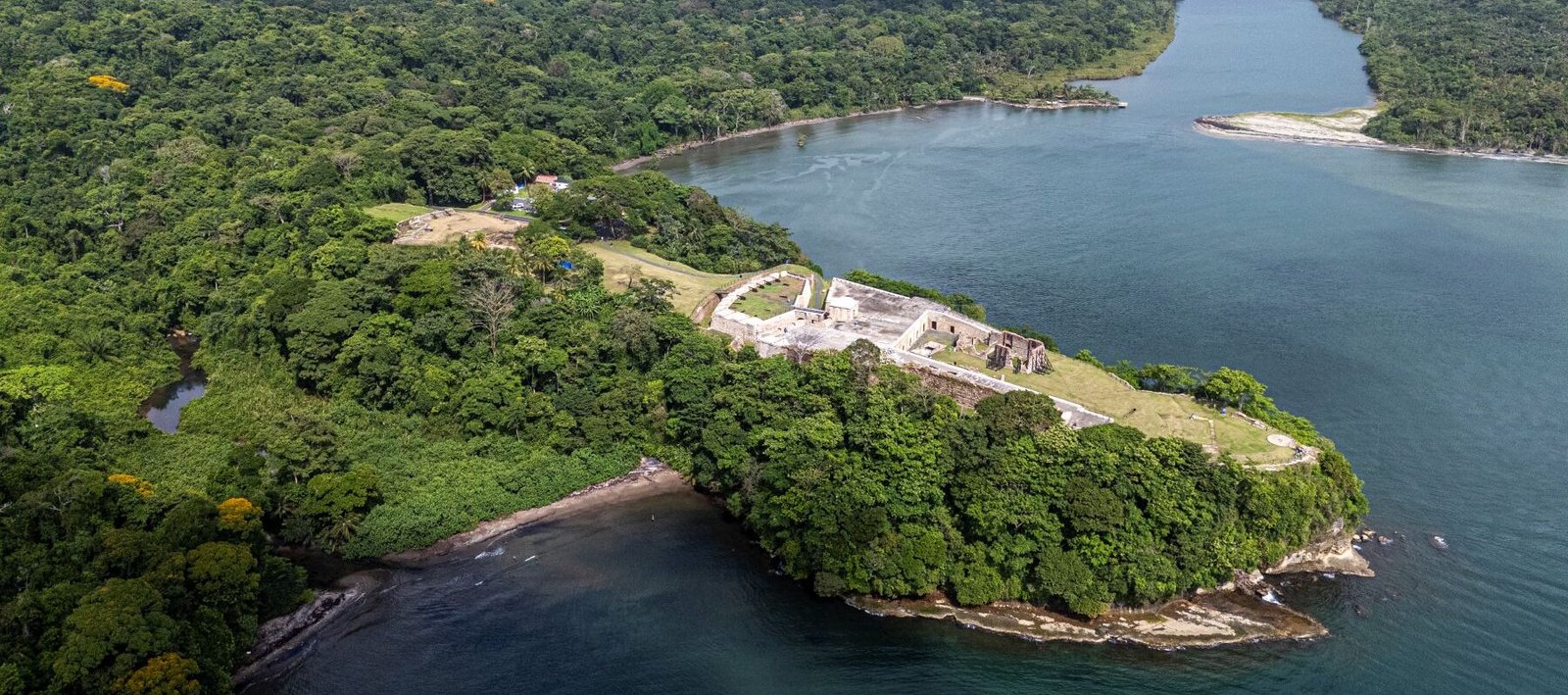

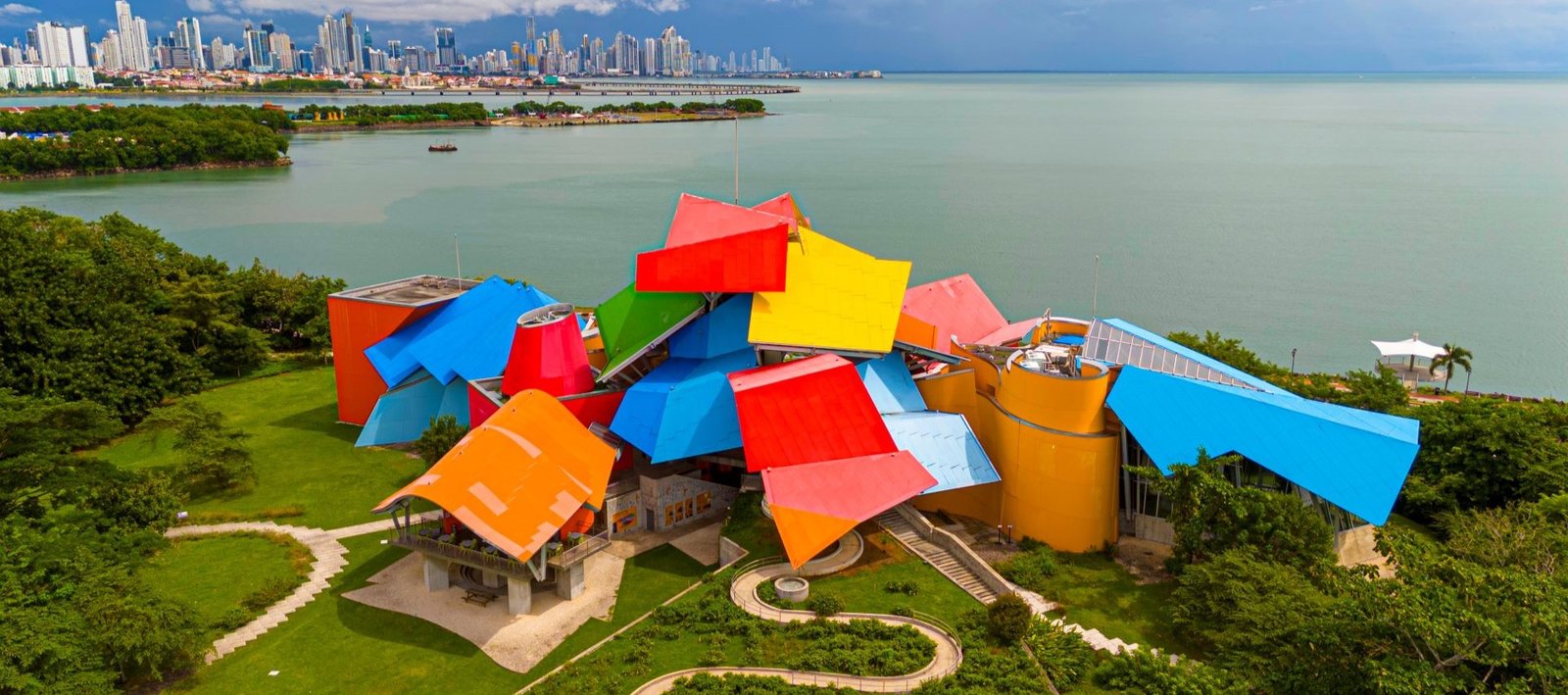
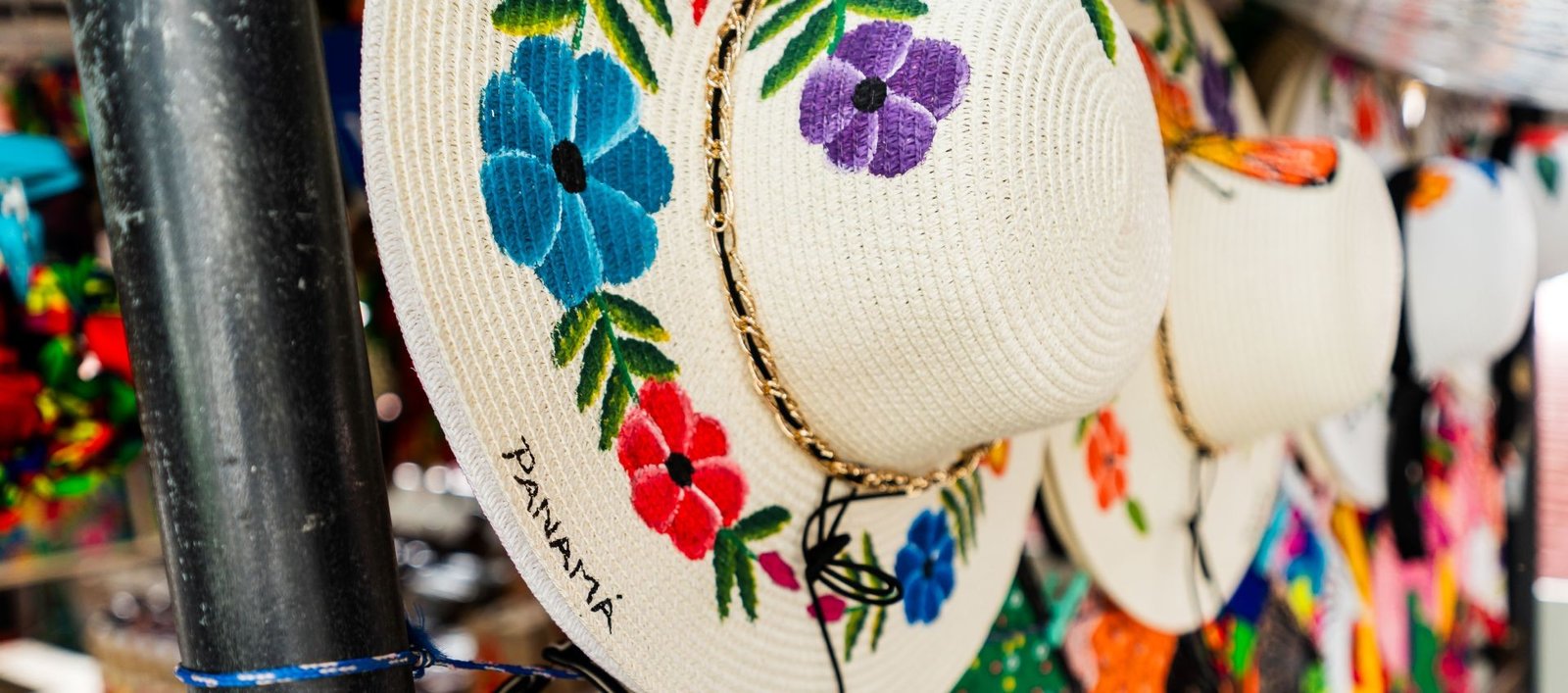
Leave a Reply